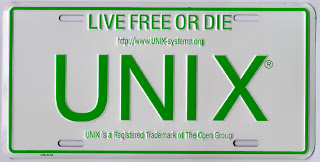This the second article in a series on using the IEEEtrans and LaTeX to form a survey suitable for submission to IEEE surveys & tutorials
Yesterday’s article made use of the bare bones template for journals provided by IEEEtrans, now we are going to look at the requirements of a survey in IEEE surveys & tutorials
IEEE Surveys & Tutorials
The following information is largely taken from the Information for Authors page, on the IEEE Communications Surveys & Tutorials site.
 The focus of this article is a survey not a tutorial, therefore all of the points below are regarding surveys and not necessary tutorials.
The focus of this article is a survey not a tutorial, therefore all of the points below are regarding surveys and not necessary tutorials.
IEEE Communications Survey & Tutorials is a free online journal published by the IEEE Communications Society. Article appear in both the IEEE Xplore Electronic Library and the IEEE ComSoc Digital Library
To finding existing surveys to read and use as examples, you can sign up to a guest account with IEEE ComSoc Digital Library which will give you free access, at the time of writting, the IEEE ComSoc Digital Library website was down, so I’ve not yet been able to verify this.
IEEE Communications Surveys and Tutorials is targeted for the generalist throughout the field of communications and communications networking. Intended readers include those involved in research, development, deployment, or instruction in fields related to communications.
All surveys should be tutorial in nature and should be written in a style comprehensible to readers outside the speciality of the article.
Typically, mathematical equations should be kept to a minimum, and not be used unless they are vital to the presentation. Articles intended to instruct in a mathematical area should be presented at a level comprehensible to readers with appropriate backgrounds, and the appropriate background should be carefully delineated in the introductory section of the article.
The term survey, as applied here, is defined to mean a survey of the literature. A survey article in IEEE Communications Surveys & Tutorials should provide a comprehensive review of developments in a selected area, covering its development from its inception to its current state and beyond, and illustrating its development though liberal citations from the literature. Such citations would naturally lead to an authoritative and comprehensive bibliography. The objective is to provide the reader with a sense of the history, development, and future of the topic area, including its interactions with other areas, and enough information to comprehend the development and identify the major players.
As an example, the article “A survey of markup languages” might discuss a number of markup languages, such as WML, XML, HTML, CHTML, and voiceXML. The article might define the term “markup language” and describe some general features and objectives by way of introduction. The article might then provide a time-line of events leading to the advent of markup languages, citing major milestones and breakthroughs. From there, the article might describe the markup languages in chronological order, showing how previous languages developed from previous ones through liberal citations to the literature. The article might conclude by giving the author’s well-thought-out opinions on the future.
References must be numbered sequentially, not alphabetically. The basic reference format is: [#] L. Brakmo and L. Peterson, ” TCP Vegas: End to End Congestion Avoidance on a Global Internet,” IEEE JSAC, vol. 13, no. 8, Oct. 1995, pp. 1465-80.
Authors must clearly state the category of the article in the abstract and again in the introductory section and also clearly state the scope of the article. For example, there must be a statement of the form “This article surveys the literature over the period 1990-2001 on turbo codes as they apply to wireless communications.”
Authors are encouraged to consider inclusion of multimedia materials in cases where such material would substantially improve the value of the article to the reader. HOW ???
Figures and tables should be used liberally.
There are no limits on paper length, number of figures, references, etc.
Required formats for electronic submission is PDF.
Submit survey’s using the LaTex structure. Include the compiled pdf, figures (as eps files with fonts embedded), bios and photos in the final article, keywords, and abstract
(Note: For the best presentation of your article’s entry in IEEE Xplore, do not include equations in the abstract.)
Once the survey is complete it’s submitted via the ManuscriptCentral website









